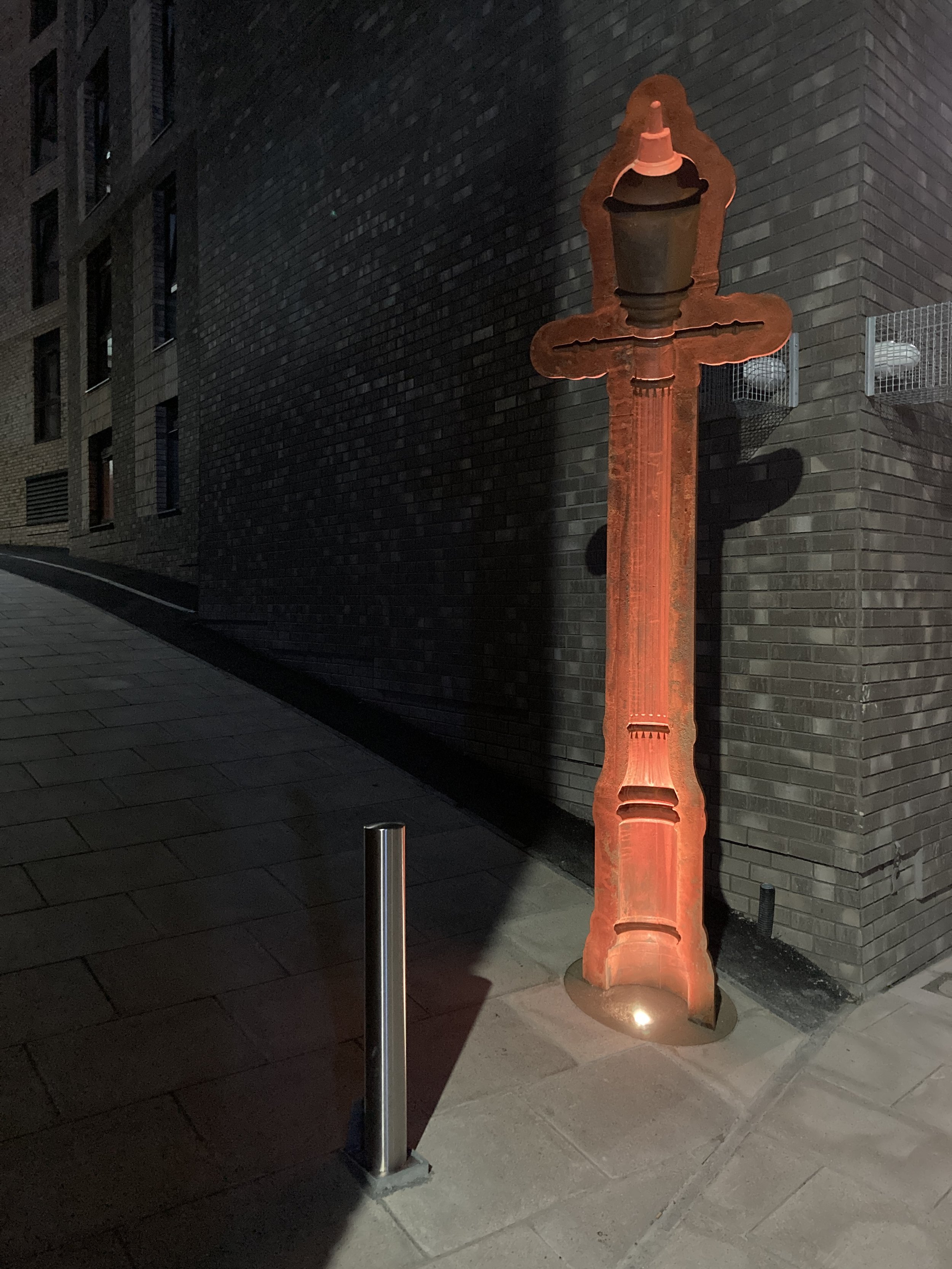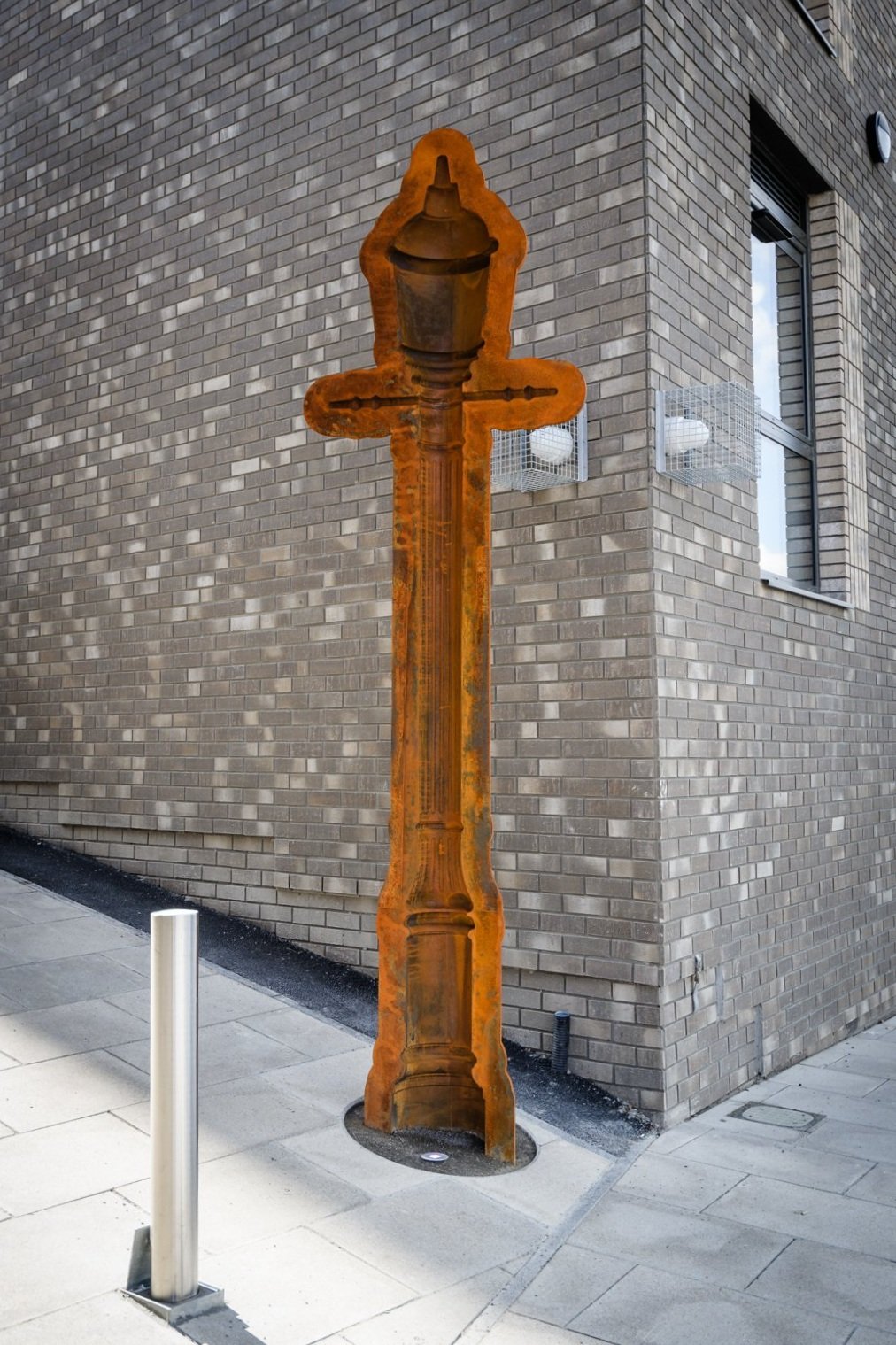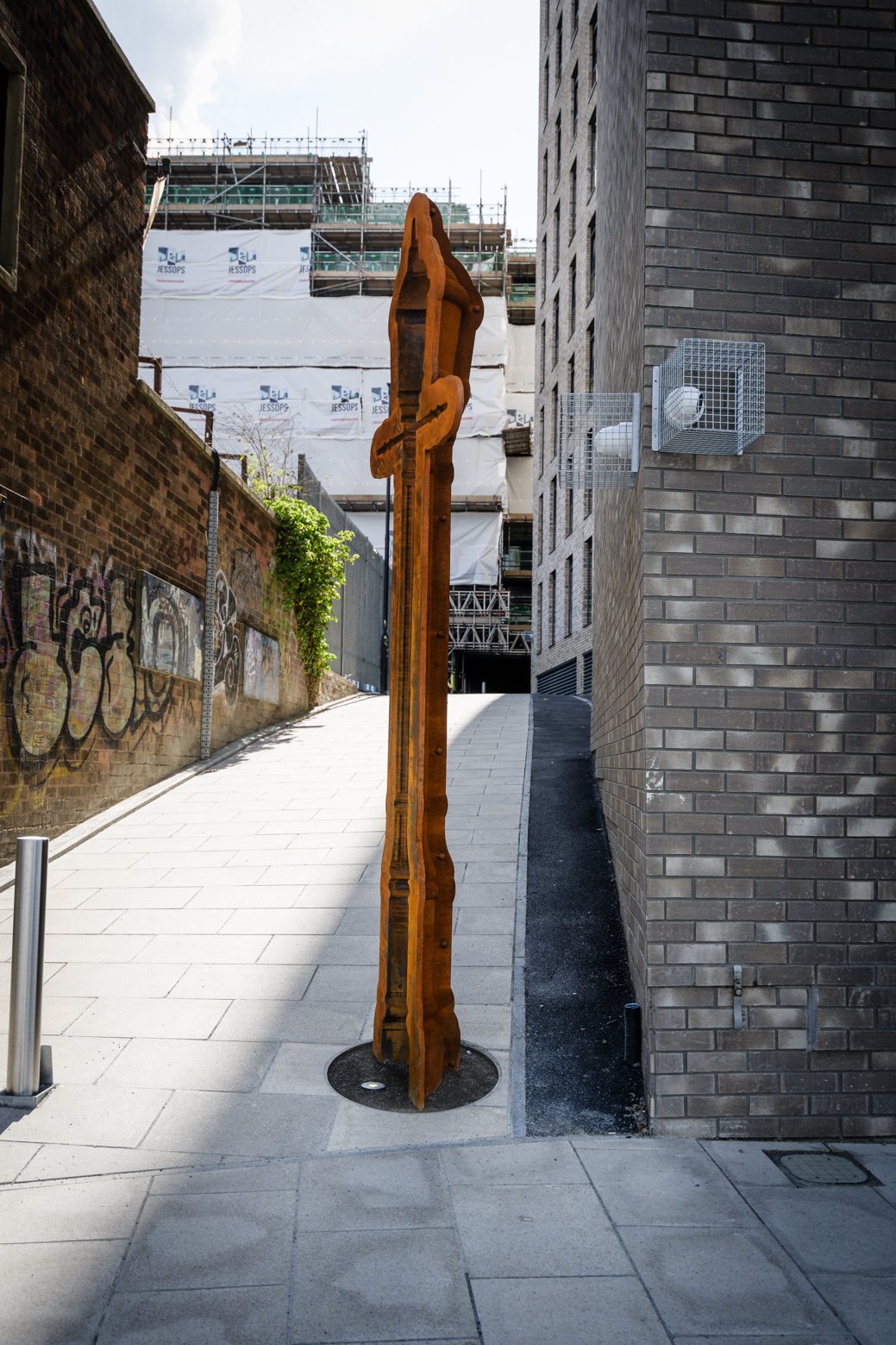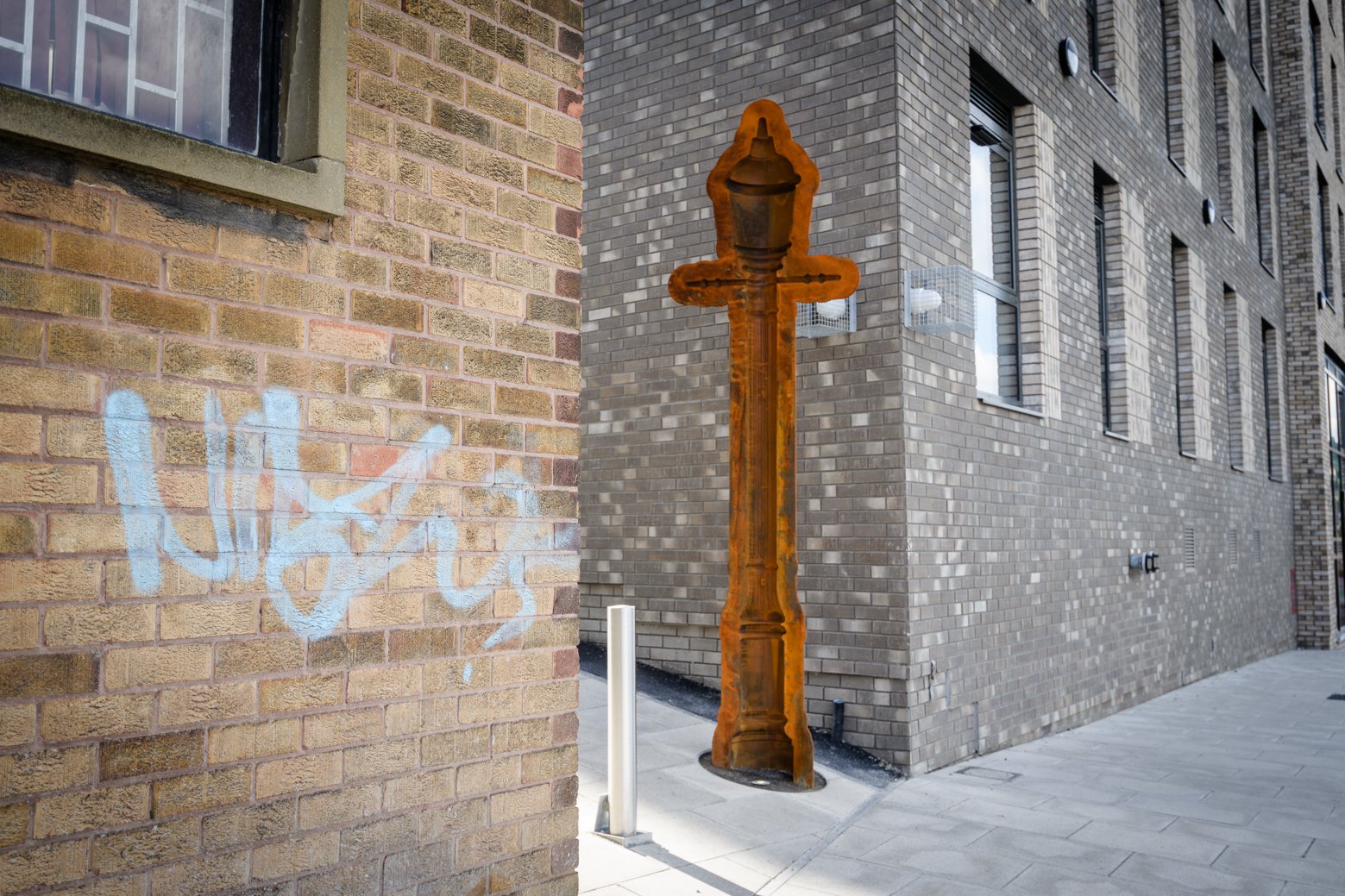Nocturnal Photograph: David Appleyard
Daytime Photographs: Mark Howe
WHAT A STINKER! (A NEGATIVE LIGHT)
2023
What Eric Saw or The Diary of Eric Blair Aged 35 and ¾
‘At night the hilliness creates fine effects because you look across from one hillside to the other and see the lamps twinkling like stars.’
It is 1936 and whilst visiting Sheffield to gather research for his book, Eric Arthur Blair steps out the front of his ‘digs’ in Neepsend, north of Scotland Street, just beyond Kelham Island.
Eric has travelled from the south of England to the ‘Old World’ as he calls it, a land which begins at the Potteries of Stoke and stretches north. He visits many northern villages, towns and cities including here, Sheffield. His diary entries for his time in this post-first-world-war Sheffield, are rich in language, describing the ‘sinister magnificence’ of ‘rosy sulphur’ drifting over the city. Young working men are ‘red-lit boys’. He witnesses ‘serrated flames, like circular saws’, ‘fiery serpents’ and the ‘whizz and thump of steam hammers and the scream of the iron under the blow,’ rings in his ears. The city is an assault on Eric’s senses.
This is Sheffield at a peak of steel production. Conditions are harsh and squalid. Scotland Street sits in the heart of the ‘crofts’ which houses those who work hard in the furnaces, the buffer workshops and the little mesters.
From where he stands, Eric can see beyond Scotland Street, admiring the twinkling hills of Broomhill, Broomhall and Crookes and they shimmer in an apparent celestial light provided by the street lamps, which manage to break through the cloak of smog that persistently smothers the city.
The street lamps he describes as ‘twinkling like stars’ are sewer gas destructor lamps, 84 of which have been installed in Sheffield between 1914 and 1935. The lamps are designed to draw the gases and hazards from the sewers, using it as fuel. Sheffield’s profile of hills towards and beyond Scotland Street, providing a shimmering depth of field from Neepsend.
There is beauty in the way Eric describes this vista in such a warm and generous lilt which contrasts heavily to his description of his experience of the satanic beasts of the furnaces purging putrid, black smoke into the atmosphere.
Eric’s descriptions and the lamps conjure positives from the negatives; the sewer gases become stars, the ‘stars’ a relief on the hillside of the opaque spew from the machine of industry; the ‘old world’.
And so this lamp post also offers different perspectives, depending on where it is viewed from. The relief element offers both the negative and positive facets of the form, illuminated to be a twinkling star on the landscape of the old ‘crofts’ of Sheffield, once the home of the women, men and children whose ghosts roam these streets after a day’s toiling.
Eric's diaries were published the following year as The Road To Wigan Pier. And he went on to have considerable success with his following books too, particularly Animal Farm and 1984. You may know him better by his pen name, George Orwell.
Written by Annie Thirlwell-Hicks
Sculpture - What a Stinker! by David Appleyard
Location - Scotland Street, Sheffield
Materials - Cast Iron, lighting fixture
Height - 4 metres




